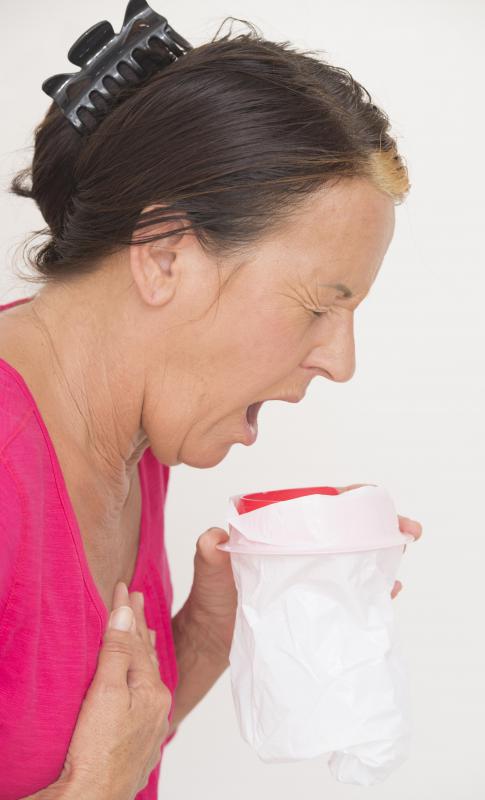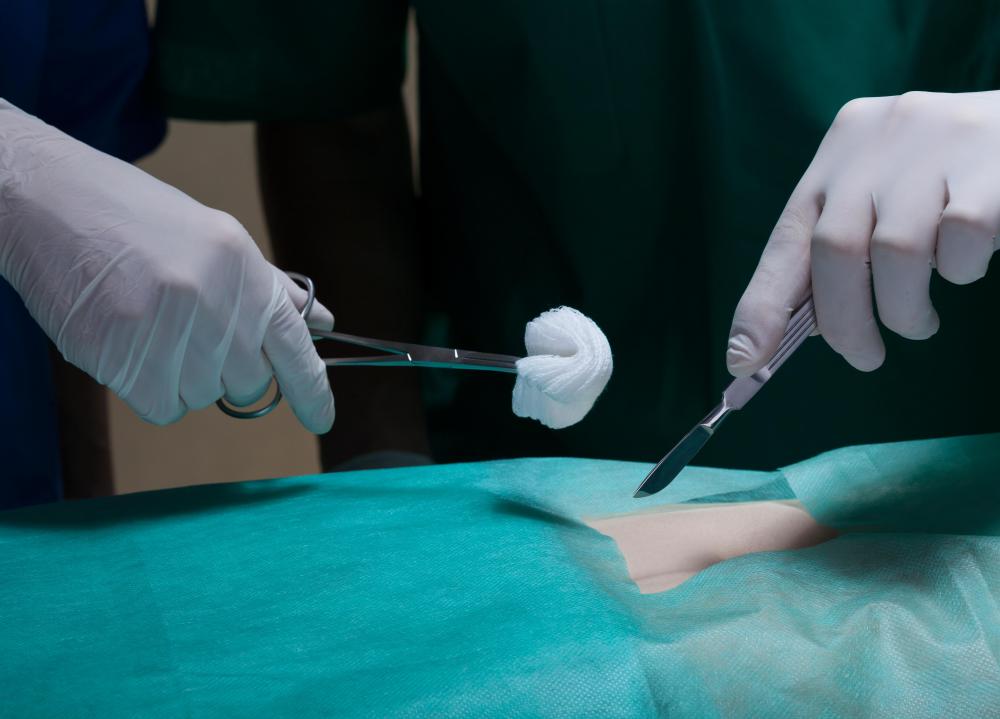At WiseGEEK, we're committed to delivering accurate, trustworthy information. Our expert-authored content is rigorously fact-checked and sourced from credible authorities. Discover how we uphold the highest standards in providing you with reliable knowledge.
What is a MRSA Abscess?
A MRSA abscess is a type of skin infection that has been shown to be resistant to most types of antibiotic treatment. MRSA is a shortened form of methicillin-resistant staphylococcus aureus. Staphylococcus aureus is a type of bacteria that commonly lives on the skin. In MRSA infections, this bacteria does not respond to treatment involving a lot of the more commonly used antibiotics. Without timely and proper treatment, this type of skin infection can have devastating effects, causing extensive tissue damage and, in the most severe cases, even death.
It is typical for a MRSA abscess to begin as a simple cut or scratch. If the antibiotic-resistant bacteria is on the skin, it then moves into the open wound. This leads to an infection known as an abscess. If the infection is not properly treated, it begins to spread underneath the skin and into the deeper tissues such as the muscles. This infection may also spread into the bloodstream of the patient and then travel to various other parts of the body.

If a cut or scratch on the skin begins to look infected, the patient should seek medical attention right away. Signs of infection due to a MRSA abscess include a growing circle of redness around the injury, sometimes with red streaks extending from the site. In some cases, the tissue around the injury will begin to swell and may feel warm or even hot to the touch.

The first step in treating a MRSA abscess involves having the abscess surgically drained. The doctor will often apply a local anesthetic to the area, either in the form of a topical ointment or an injection with a substance such as lidocaine. A small incision will then be made into the abscess so the doctor can drain the dead tissue and pus from the infected area. A culture will likely be taken in order to confirm the presence of the MRSA bacteria. This will help to determine which antibiotics will actually be useful in treating the infection.

In most cases, the patient with a MRSA abscess will be sent home with antibiotics and instructions on how to properly care for the injured site. However, if the damage has been extensive or if the infection does not respond to the medications given, hospitalization may become necessary. In this case, the patient is given intravenous antibiotics and watched closely for any potential signs of complication. More invasive surgery may be necessary if the infection has spread to other parts of the body.
AS FEATURED ON:
AS FEATURED ON:
















Discussion Comments
I have got MRSA and now have had seven abscesses cut and drained in the last three months. Every time I stop antibiotics they come back at me so quickly. They are so bad to control.
@starrynight - A MRSA staph infection is definitely worse than a regular staph infection. As the article said, MRSA is resistant to the antibiotics doctors usually use to treat staph infections. That's why your friends infection was so much worse than yours. In your case, the antibiotics worked well. In her case, what she had was resistant.
MRSA is really scary. I actually had a regular staph infection a couple of years ago, and I ended up with a few spots on my skin that were swollen and filled with pus. I ended up going to the doctor and getting them drained with a syringe, and then going on antibiotics for a few weeks and being fine.
However, a friend of mine had MRSA a couple of years ago and she had to be hospitalized because of her MRSA abscessed. MRSA is so much worse than just a regular staph infection, it's really terrible.
Post your comments